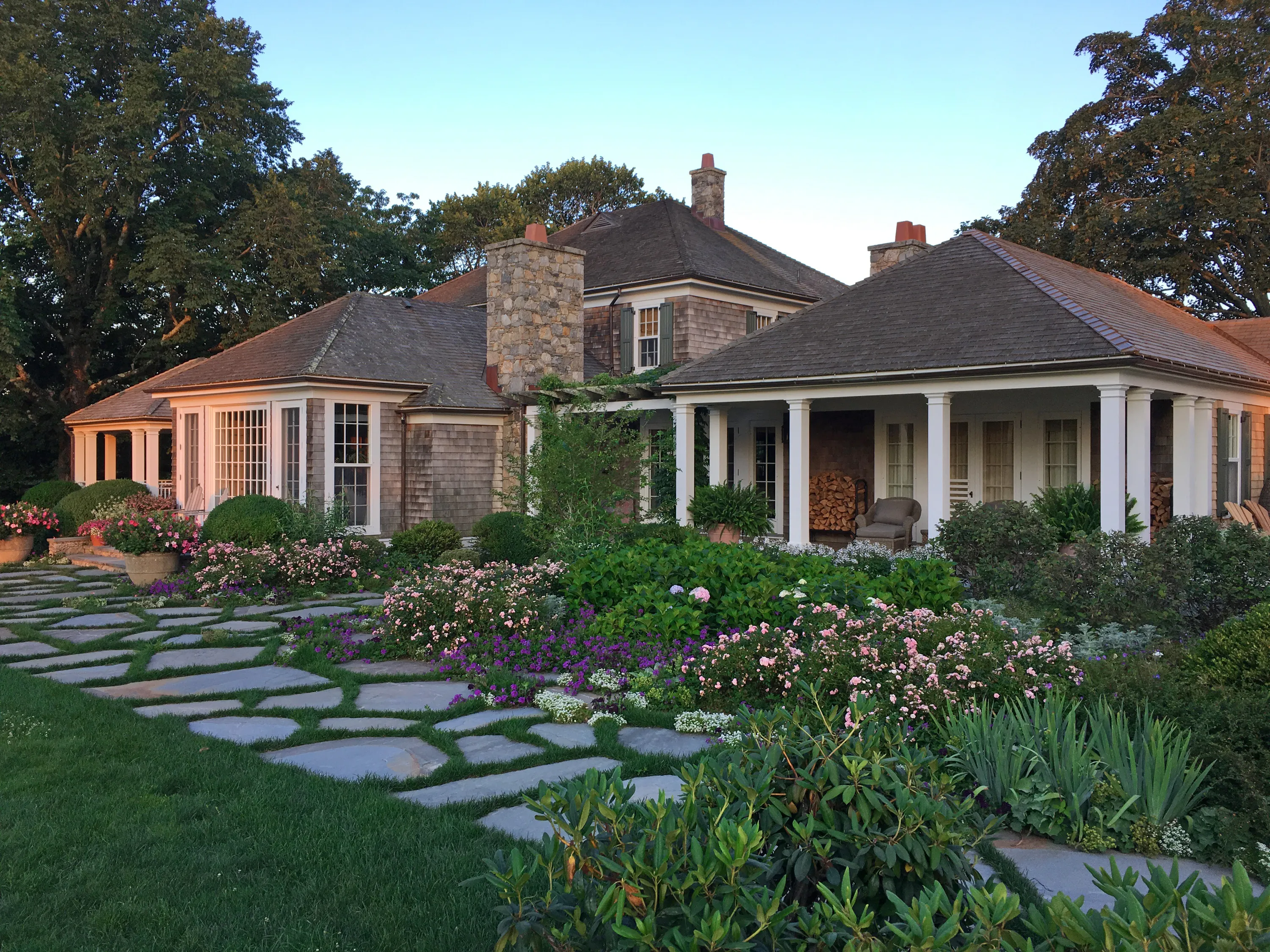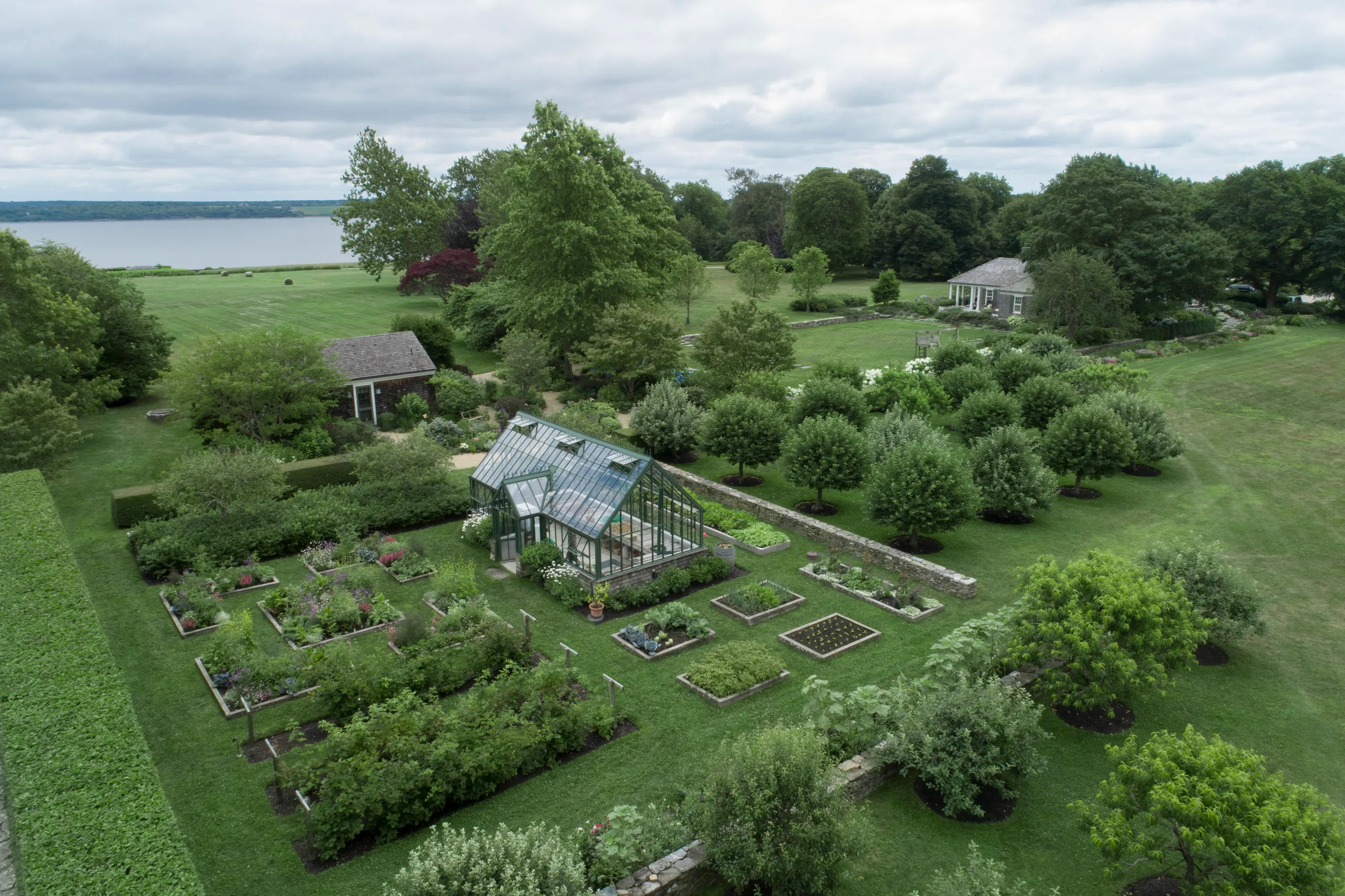Farmland is in the DNA of Chicago landscape architect Doug Hoerr; he has an innate connection that goes deeper than rows of crops and bushels of produce. He knows about the syncopation of the land and how shrubs knit together to buffer the wind, while majestic shade trees stretch their limbs in open pasture. Farms are about how their entry drives allow us to glide into a scene, dropping hints of the immersion that will follow. Farms are defined by the fences and stone walls that segment space, sending us firmly and safely where we need to go, while protecting the livestock nurtured by the land. Having grown up on a Midwestern farm, Doug Hoerr (pronounced “hare”) knows the subtleties of farmland by heart.
But every farm is different. Often, echoes from the past weaken over time. That was the case when, in 2009, Hoerr Schaudt, an internationally acclaimed landscape design firm, was contacted by the homeowners of a 60- acre generational farm in Rhode Island. Hoerr Schaudt has planned public parks as well as residential properties throughout the country, but principal Hoerr never lost his soft spot for working farms. He didn’t hesitate before hopping a flight east. “I needed to see if the project was a good fit,” Hoerr says of the initial walk-through. The moment he saw the donkey barn that greets everyone on arrival, he was on board.
Read the full article from New Old House Magazine
Photography by Scott Shigley















